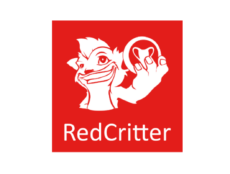
Articles
A New Study Found OER to Match and Even Outperform a Commercial Textbook
By Henry Kronk
April 21, 2018
A new study conducted by researchers at Kwantlen Polytechnic University in British Columbia, Canada examines the performance of students using open education resources (OER) in both print and digital formats compared to a traditional textbook from a commercial publisher. The study found that students using OER spent less time overall studying for the class while scoring comparably with those who used a commercially published textbook.
The news is encouraging considering the cost of educational materials has drastically increased in the past decade. As reported recently by Student PIRGs, it has risen nearly four times the rate of inflation in the U.S. What’s more, as many as 65% of students don’t purchase all of the educational materials assigned by professors because of their high cost.
It’s no secret that students using OER generally perform similarly to those using traditional textbooks. A growing body of academic research supports that conclusion. But medium matters. Without budgets for a layout and design team, one might implicitly believe that students would prefer a commercial textbook or at least be able to use it more easily.
OER vs. A Commercial Textbook
 The Kwantlen team led by Professor Rajiv Jhangiani tested for study habits and how efficiently students were able to complete the course. They split their sample into three groups. The first used the commercial textbook, the second read a text version of the OER, while the third used the digital version. “Students across the three conditions did not differ in the number of hours per week they reported spending studying the textbook or in the proportion of their weekly assigned readings that they typically completed,” the authors write. “These results suggest that there were no meaningful differences in how often and how effectively students engaged with their assigned textbook. Given that students’ exam performance was gauged solely by their answers to multiple-choice questions that could have been answered by reading any of the textbooks, it appears that students’ textbook studying habits do not explain the differences in exam performance.”
The Kwantlen team led by Professor Rajiv Jhangiani tested for study habits and how efficiently students were able to complete the course. They split their sample into three groups. The first used the commercial textbook, the second read a text version of the OER, while the third used the digital version. “Students across the three conditions did not differ in the number of hours per week they reported spending studying the textbook or in the proportion of their weekly assigned readings that they typically completed,” the authors write. “These results suggest that there were no meaningful differences in how often and how effectively students engaged with their assigned textbook. Given that students’ exam performance was gauged solely by their answers to multiple-choice questions that could have been answered by reading any of the textbooks, it appears that students’ textbook studying habits do not explain the differences in exam performance.”
But in terms of overall time spent studying for the course, the researchers did note an interesting outlier: “The students assigned the commercial textbook reported spending a significantly greater number of hours per week studying for the course than students in either of the open textbook conditions, a difference that might be traced to the greater amount of time per week that students assigned the commercial textbook also reported spending reviewing lecture material.”
The Potential of OER
In other words, students using the openly licensed material were able to more efficiently internalize and remember the information conveyed. Students also rated the quality of the print version of the OER higher than the commercial equivalent, although the digital version received a lower ranking. The authors acknowledge that “the open textbook (in its first edition) and the commercial textbook (in its tenth) are written by different authors with differences in the breadth and depth of content coverage, organization, and writing style” and that a text’s quality leans on several other factors besides the nature of its copyright.
Still, it reinforces the point that OER can meet or exceed the standards of commercial texts. Jhangiani’s students were also asked to estimate the price of each of the course materials used. All three groups estimated the cost of each course material at roughly $50 CAD. The commercial textbook cost over $100 in reality, while the digital version of the OER was free. The text OER more or less constituted the price of printing the book, and is significantly less than the estimated $50.
For another notable point, the authors noted no significant variation in performance comparing digital to print. The lack of difference, the authors write, “is encouraging given the general preference students express for print textbooks. This finding also carries great practical significance as open textbooks in digital format can be distributed to students entirely free of cost, evidently with no negative impact on exam performance.”
Use of OER is on the rise. As Inside Higher Ed reported in December, OER in the classroom nearly doubled since the previous school year. Still, it has yet to see broad use. The survey cited by the publication found that only 9% of professors use OER.









4 Comments